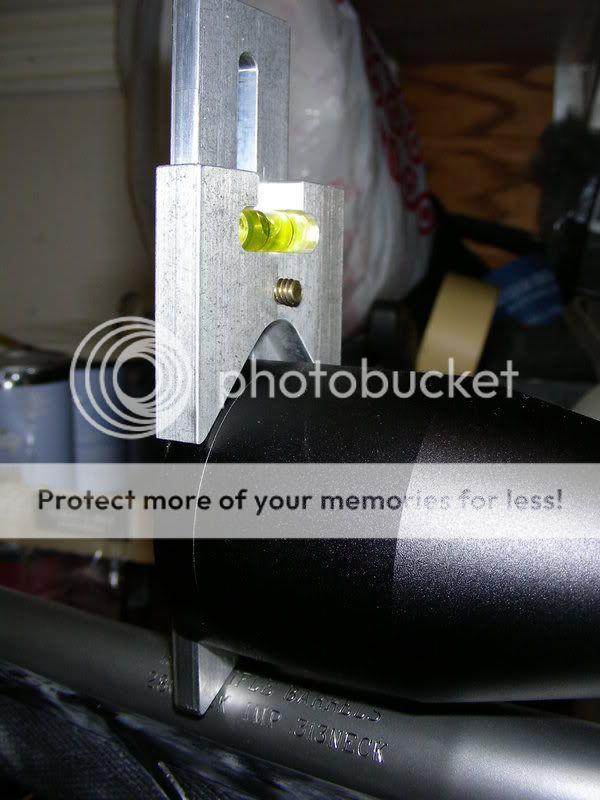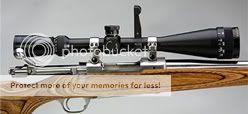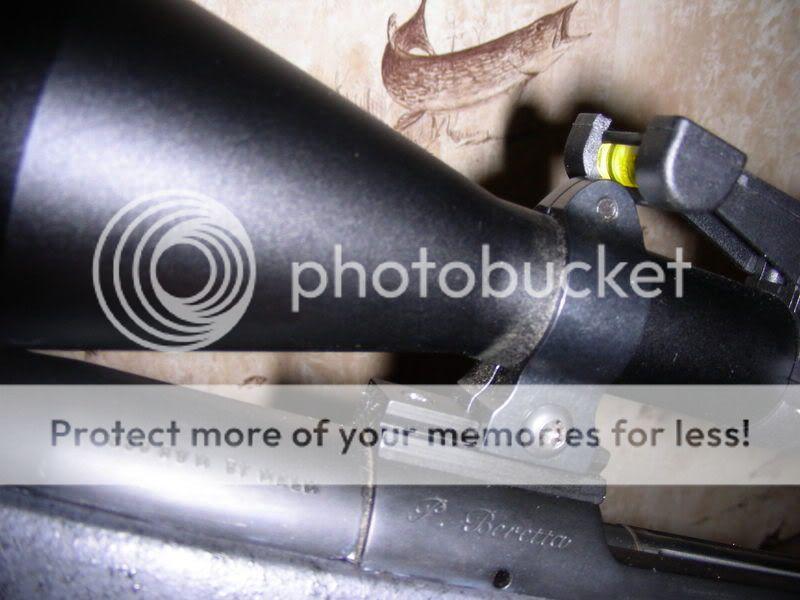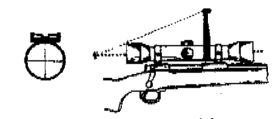I may be completely wrong here (but I don't think I am). If I am, I'd appreciate if somebody could tell me why, because it means I have a trouble somewhere in my personal integrated understanding of how things work... I guess I might be more confident if my understanding didn't seem to run counter to the 'conventional wisdom'...
But provided that you have a way to consistently get the reticle lined up so that 'up' is really the gravitational 'up' when you take the shot.... I don't see how the perfect alignment of the scope to the action should matter, provided that its positioning does not affect your ability to get into a comfortable and consistent shooting position (with the reticle aligned properly to vertical).
I was originally a fan of the scope-rail mounted anti-cant device (assuming everything lined up so that it was 'level' when the action/aligned scope are level) -- but I recently obtained a scope-ring style mounted anti-cant device, and to my mind, it makes everything much easier:
1) Mount scope, getting it as close as you can to "vertical" with respect to the action, but not worrying about buying a bunch of expensive stuff or taking half a day to do it -- just basically eyeball it to the best of your ability... loosely attach a scope-mounted anti-cant device.
2) Using a vice, sandbacks, or something steady, point rifle/scope at a plumb line 100+ yards away, and align the RIFLE until the reticle is lined up with the plumb line.
3) Adjust the anti-cant device so the "bubble" is centered when the reticle is properly vertically aligned -- tighten it down.
4) After tightening, ensure the bubble is still centered with the reticle aligned to the plumb line.
DONE....
When shooting, I get roughly on target, check the bubble, tilt the rifle until the anti-cant indicates it is level, lock down the pod-loc on my bipod, confirm still level... and proceed with everything else.
My point being I guess that I don't see the point of going to extreme pains to ensure the scope reticle is PERFECTLY aligned with respect to the action. In fact, my feeling is that the *ideal* alignment of the reticle with respect to the action -- ie, the alignment that allows the most natural, comfortable body position in which the reticle is aligned to gravity, is probably NOT a perfect reticle/action alignment. I haven't bothered to pursue this "perfect cant" yet, but its on my list of things to try sometime...
In terms of bullet trajectory, the bullet doesn't give a **** about the orientation of your rifle once it leaves the barrel. The reticle/action alignment will of course affect your initial zero -- but once zeroed-in (with a properly aligned rifle to gravity), the fact that your rifle is canted does not matter provided that it is aligned the same way every time (which is where the anti-cant device comes in).
The only place I can see action alignment really mattering (given reticle alignment and that shooting position is not compromised) is with certain muzzle brakes that are explicitly trying to counteract muzzle rise by disproportionately venting gas in a certain direction (ie, up) -- in this situation a canted rifle could add a weird "sideways" component to recoil which could make things interesting... but I reckon it would take a significant amount of rifle cant for this to even be noticed (to the shooter, or on paper).
So that's my take... and like I said, if I'm missing some big reason why the reticle needs to be perfectly aligned to the rifle, I'd really like to know what it is I am missing.
Thanks,
-Matt

![B]](/proxy.php?image=http%3A%2F%2F%5BB%5D%5Burl%5Dhttp%3A%2F%2Fi467.photobucket.com%2Falbums%2Frr40%2Fajosesgr%2FIMG_0146.jpg%5B%2Furl%5D%5B%2FB%5D&hash=ecac094ce140f81a815f94a2e1f5ead7)
![B]](/proxy.php?image=http%3A%2F%2F%5BB%5D%5Burl%5Dhttp%3A%2F%2Fi467.photobucket.com%2Falbums%2Frr40%2Fajosesgr%2FIMG_0146.jpg%5B%2Furl%5D%5B%2FB%5D&hash=ecac094ce140f81a815f94a2e1f5ead7)




